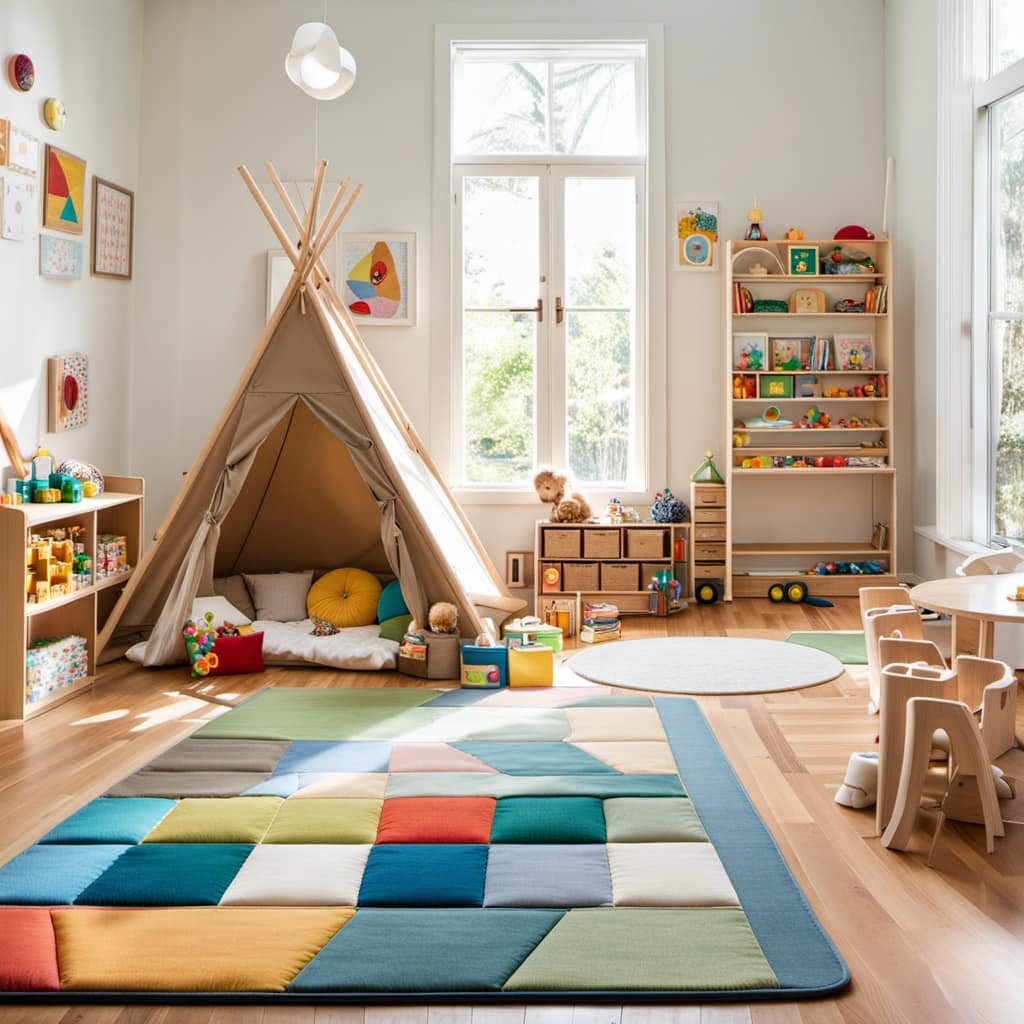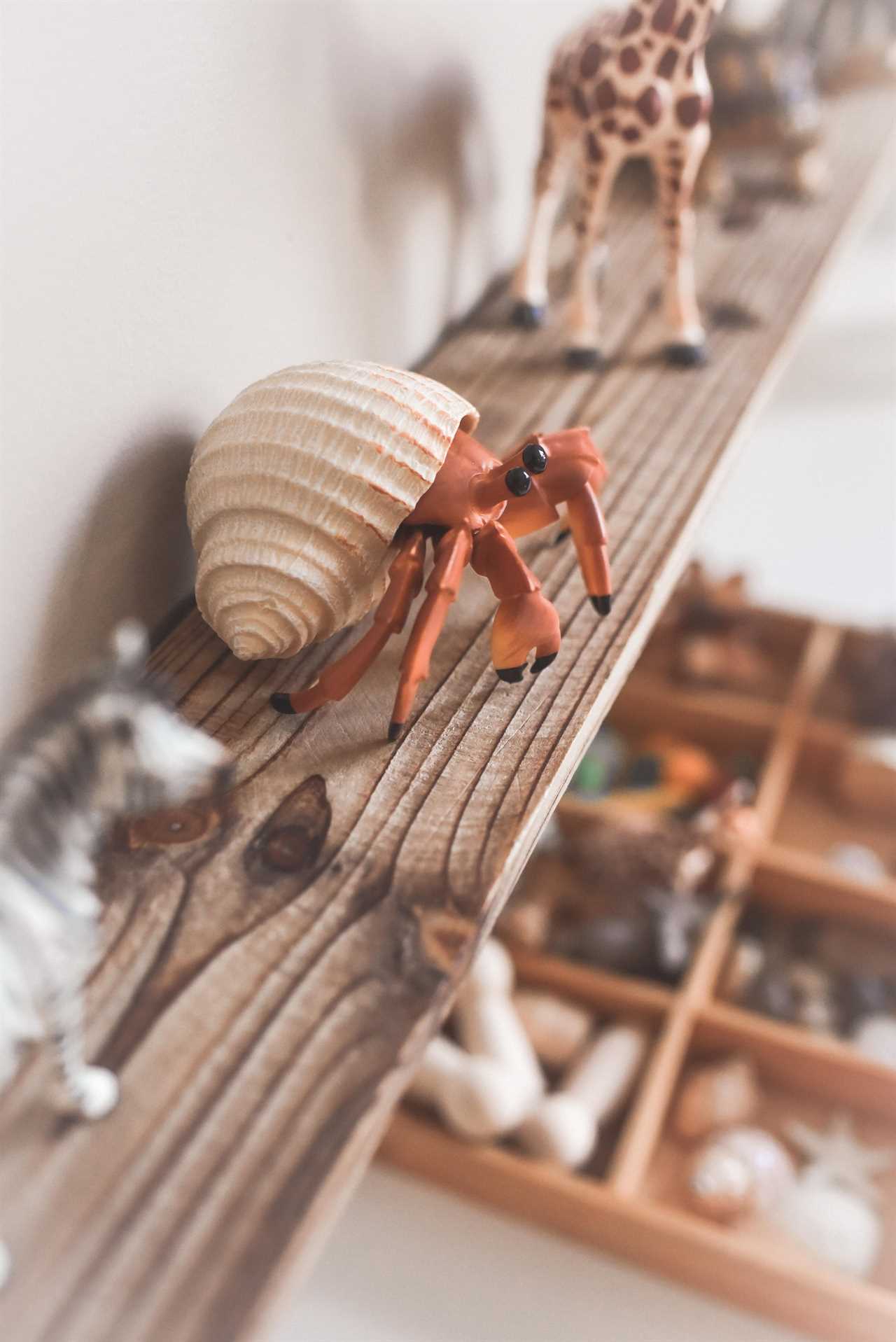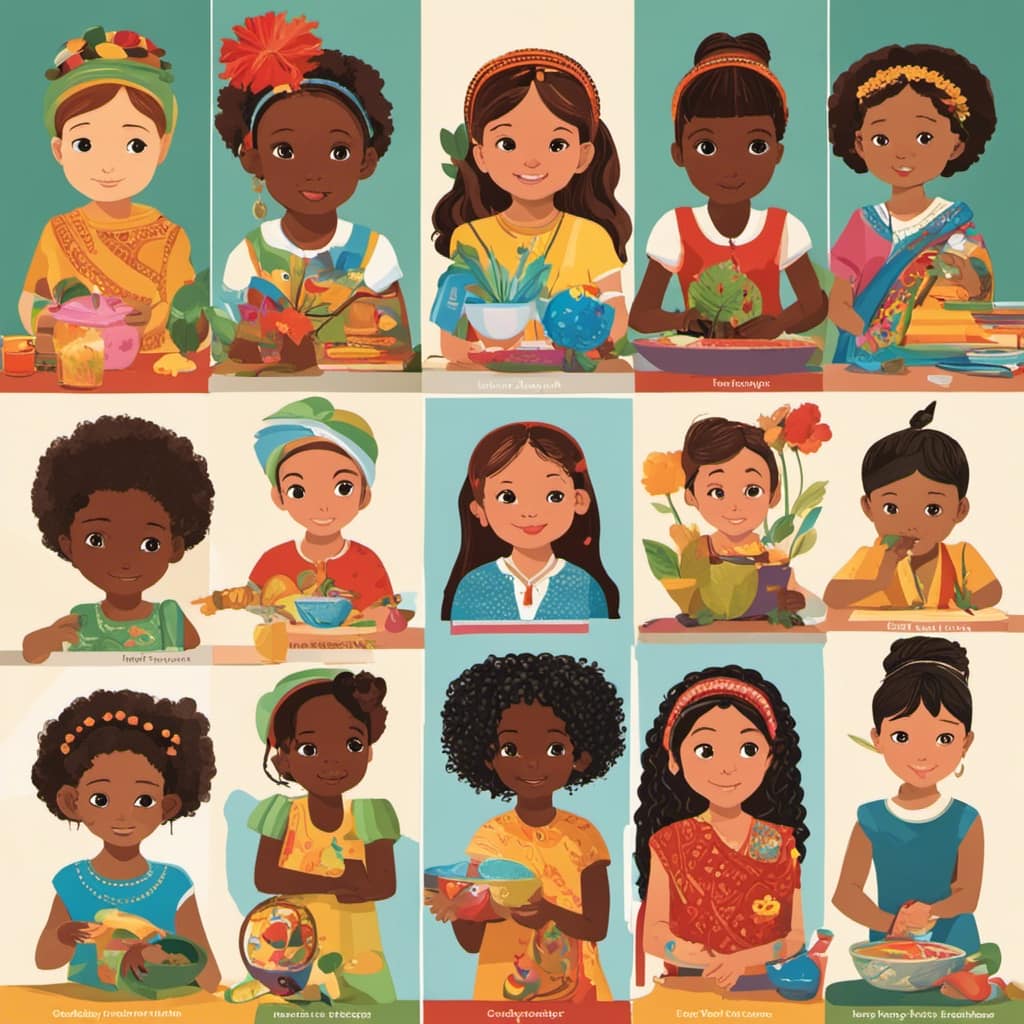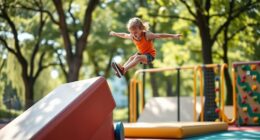- Sorting and categorizing objects
- Pouring and transferring liquids
Tired of spending a lot of money on educational toys for your kids?
Well, we’ve got some great news for you! We’ve put together 9 incredible tips for crafting your very own DIY educational toys at home.
Yes, you heard that right – you can now create fun and engaging toys that will not only entertain your little ones but also enhance their learning experience.
Get ready to unleash your creativity and make learning an absolute blast!
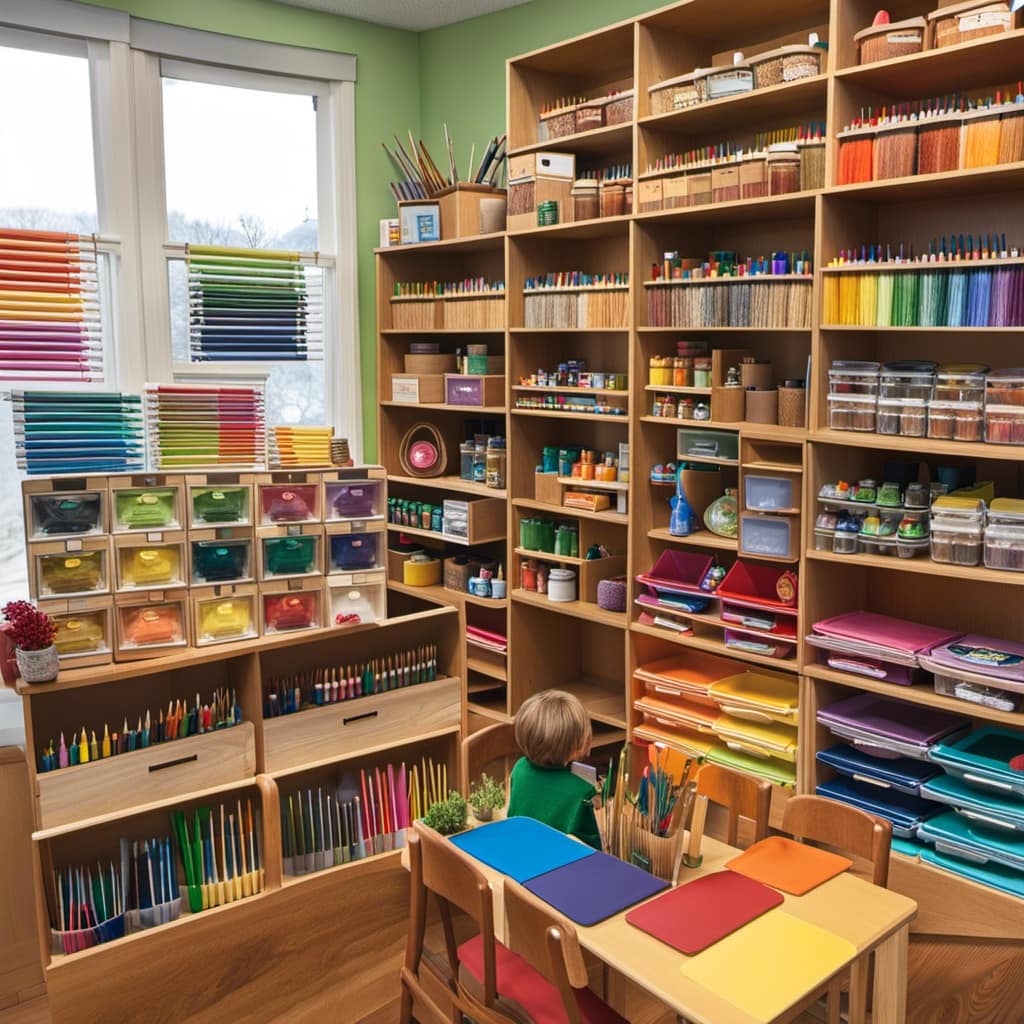
Key Takeaways
- Choose age-appropriate and safe materials for DIY educational toys
- Incorporate sensory elements to stimulate cognitive, physical, and social development
- Embrace open-ended play to foster creativity and imagination
- Personalize DIY toys based on the child’s interests to promote engagement and learning
Choose Age-Appropriate Materials
When crafting DIY educational toys at home, we should always choose materials that are appropriate for the child’s age. Ensuring age-appropriate safety is crucial to protect our little ones and prevent any accidents. It’s important to consider the size, weight, and durability of the materials used.
For younger children, avoid small parts that could pose a choking hazard. Additionally, choose materials that are non-toxic and free from any harmful chemicals. By selecting materials that align with the child’s age, we can provide them with a safe environment to learn and play. Not only does this promote their well-being, but it also enhances their educational benefits.
Age-appropriate toys help children develop their cognitive, motor, and sensory skills, fostering their overall growth and development.
Now, let’s transition into the subsequent section about incorporating sensory elements to further enhance the learning experience.
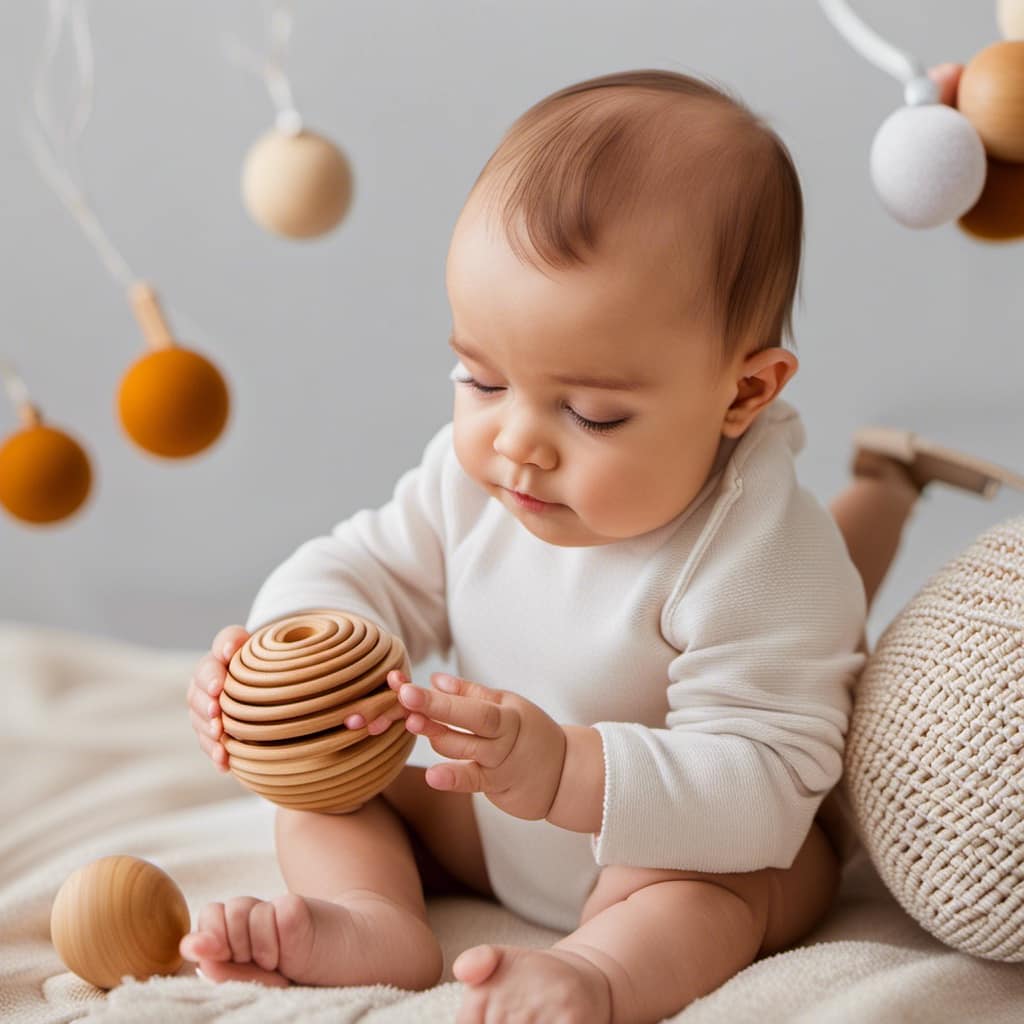
Incorporate Sensory Elements
To enhance the learning experience, we can incorporate sensory elements into DIY educational toys at home. Sensory play benefits toddlers in many ways, stimulating their senses and promoting cognitive, physical, and social development.
Here are three sensory activities for toddlers that you can try:
-
Sensory Bins: Fill a container with materials like rice, sand, or water and add different objects for your child to explore. This tactile experience enhances their fine motor skills and encourages imaginative play.
-
Sensory Bottles: Fill a clear bottle with a combination of water, glitter, small toys, or beads. As your child shakes and examines the bottle, they develop visual tracking skills and learn cause-and-effect relationships.
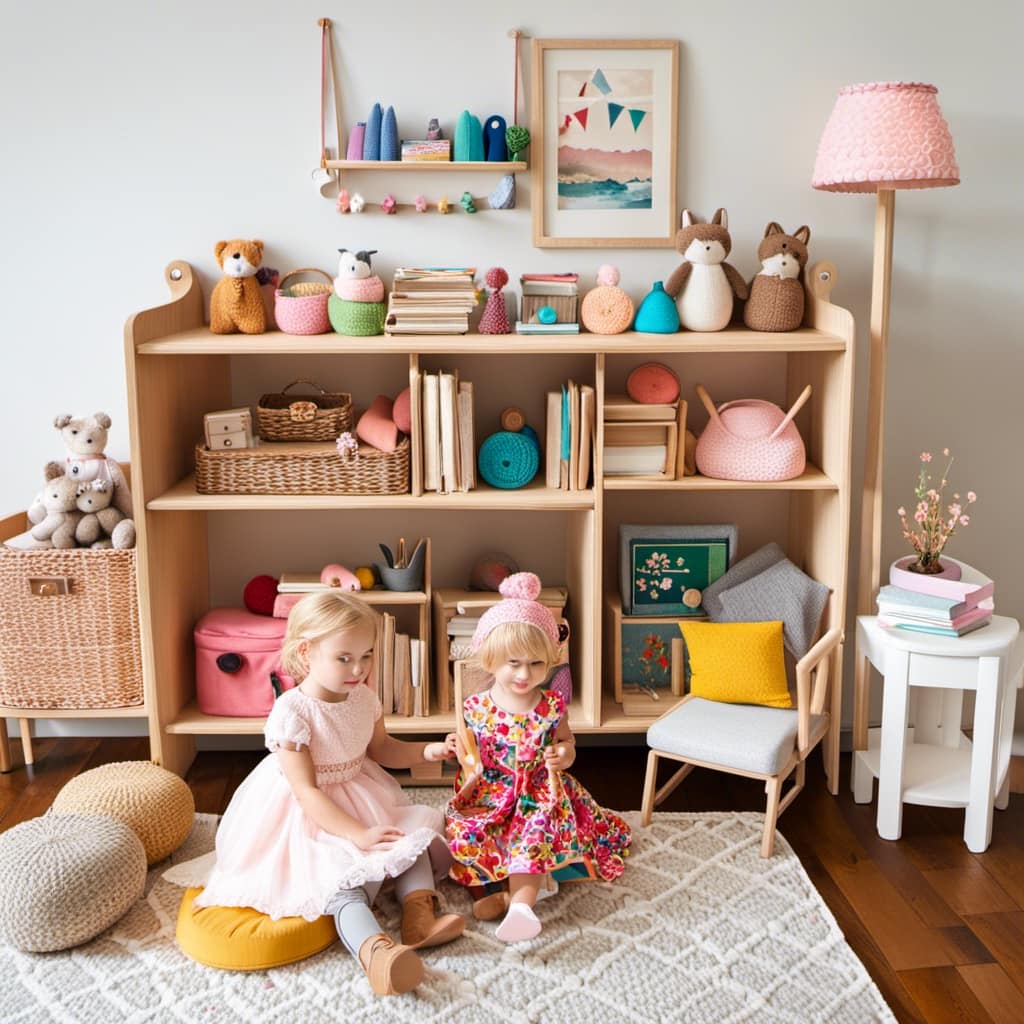
-
Sensory Tubs: Create a tub filled with materials like shaving cream, colored rice, or cooked pasta. Let your child dig, squeeze, and manipulate the materials, promoting sensory exploration and hand-eye coordination.
Incorporating sensory elements into DIY educational toys engages your child’s senses, making learning a fun and interactive experience.
Focus on Open-Ended Play
We encourage embracing open-ended play when crafting DIY educational toys at home. Open-ended play allows children to explore their creativity and imagination while engaging in educational activities. By providing toys that can be used in multiple ways, we foster imaginative play and encourage children to think critically and problem solve.
When creating DIY educational toys, consider materials that can be manipulated and transformed by the child. For example, building blocks, art supplies, and simple household items like cardboard boxes can be used to create endless possibilities for play. This type of play promotes cognitive skills, social interaction, and emotional development.

It allows children to take the lead in their learning journey and discover new ways to engage with the world around them.
Consider the Child’s Interests
Let’s take into account the child’s interests when crafting DIY educational toys at home. Personalized learning is all about tailoring educational experiences to suit an individual’s unique needs and preferences. By considering the child’s hobbies and interests, we can create toys that not only captivate their attention but also promote learning in a way that feels fun and engaging.
Here are three ways to incorporate their interests into DIY educational toys:
- Choose a theme that aligns with their hobbies, such as animals, space, or sports.
- Use their favorite colors or characters to make the toys visually appealing.
- Incorporate activities that reflect their interests, like puzzles, building blocks, or art projects.
Introduce Practical Life Activities
Let’s talk about the benefits of introducing practical life activities to our children.
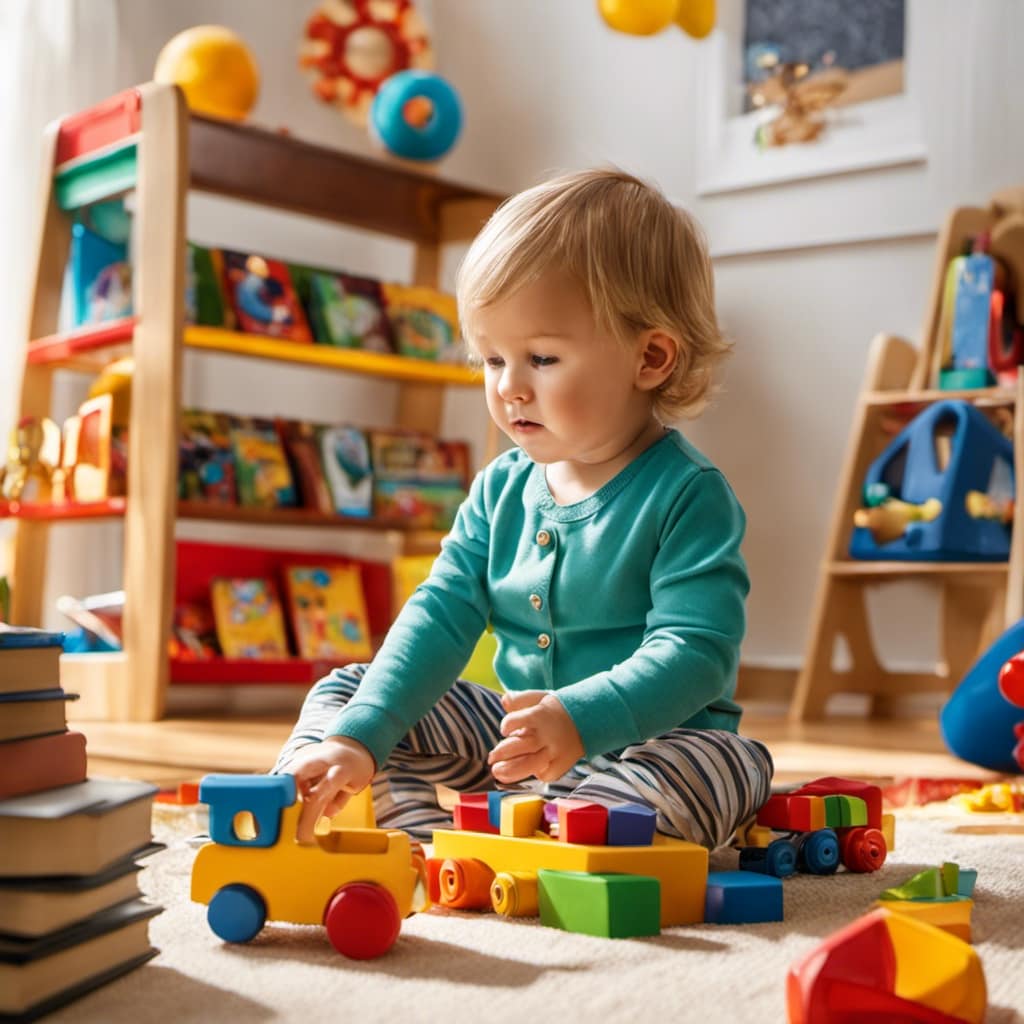
These activities not only help them develop important life skills, but they also foster independence, concentration, and a sense of responsibility.
We’ll explore some easy DIY activity ideas that you can try at home to engage your children and make learning fun.
Benefits of Practical Life
Practical Life activities offer numerous benefits to children as they engage in hands-on tasks that promote independence, concentration, and fine motor skills. These activities play a crucial role in a child’s development, helping them acquire essential life skills while fostering a sense of responsibility and self-reliance.
Here are three key benefits of incorporating practical life activities into a child’s daily routine:
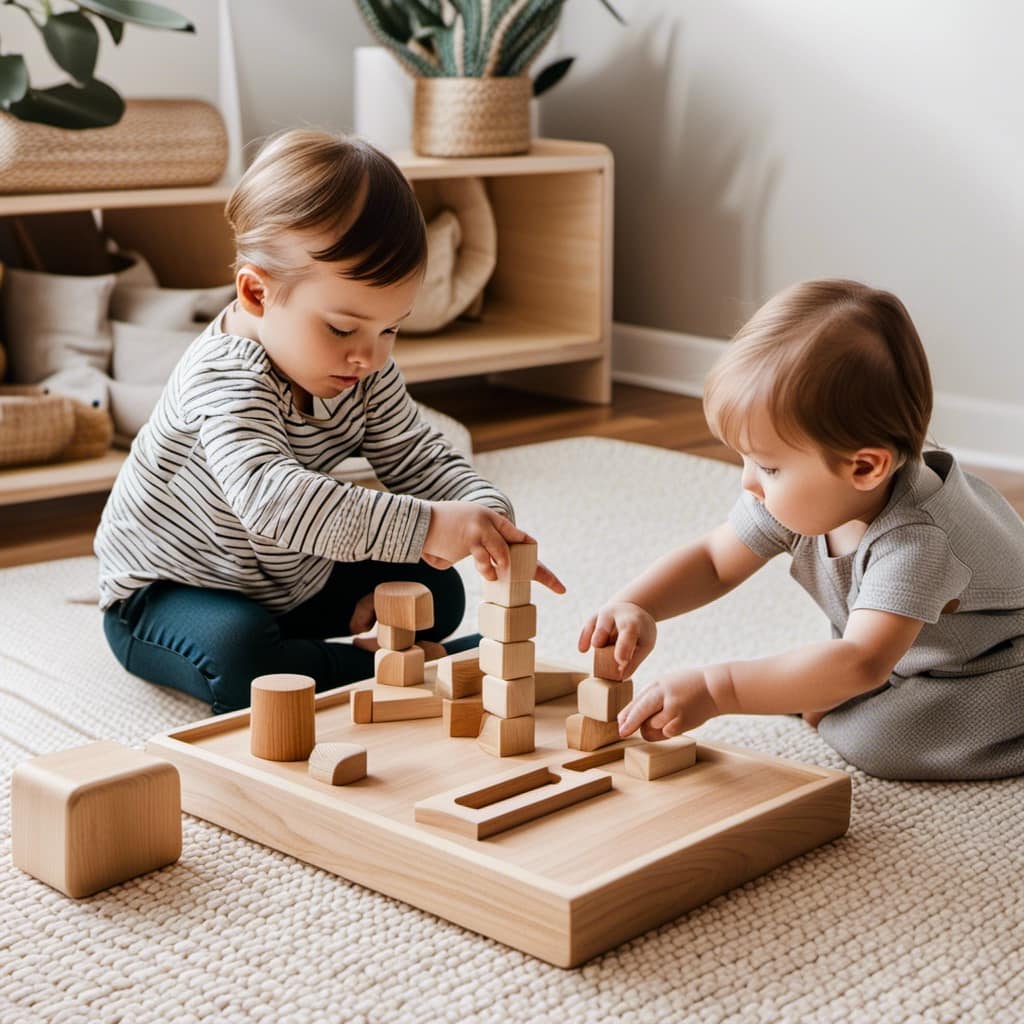
-
Development of Fine Motor Skills: Practical life activities such as pouring, buttoning, and cutting involve precise hand movements, which help children improve their coordination and dexterity. These skills are essential for tasks like writing, tying shoelaces, and using utensils.
-
Importance of Independence: By engaging in practical life activities, children learn to take care of themselves and their environment. They develop skills like dressing themselves, cleaning up after meals, and organizing their belongings. This sense of independence nurtures their self-esteem and confidence, preparing them for future responsibilities.
-
Cultivation of Concentration: Practical life activities require focused attention and concentration. As children engage in tasks like sorting, threading, and arranging objects, they learn to pay attention to details and stay engaged in an activity for an extended period. This skill is transferable to other areas of their lives, aiding in academic pursuits and problem-solving.
Incorporating practical life activities into a child’s daily routine can have a profound impact on their overall development. These activities not only promote fine motor skills but also foster independence and concentration, preparing children for a fulfilling and successful future.
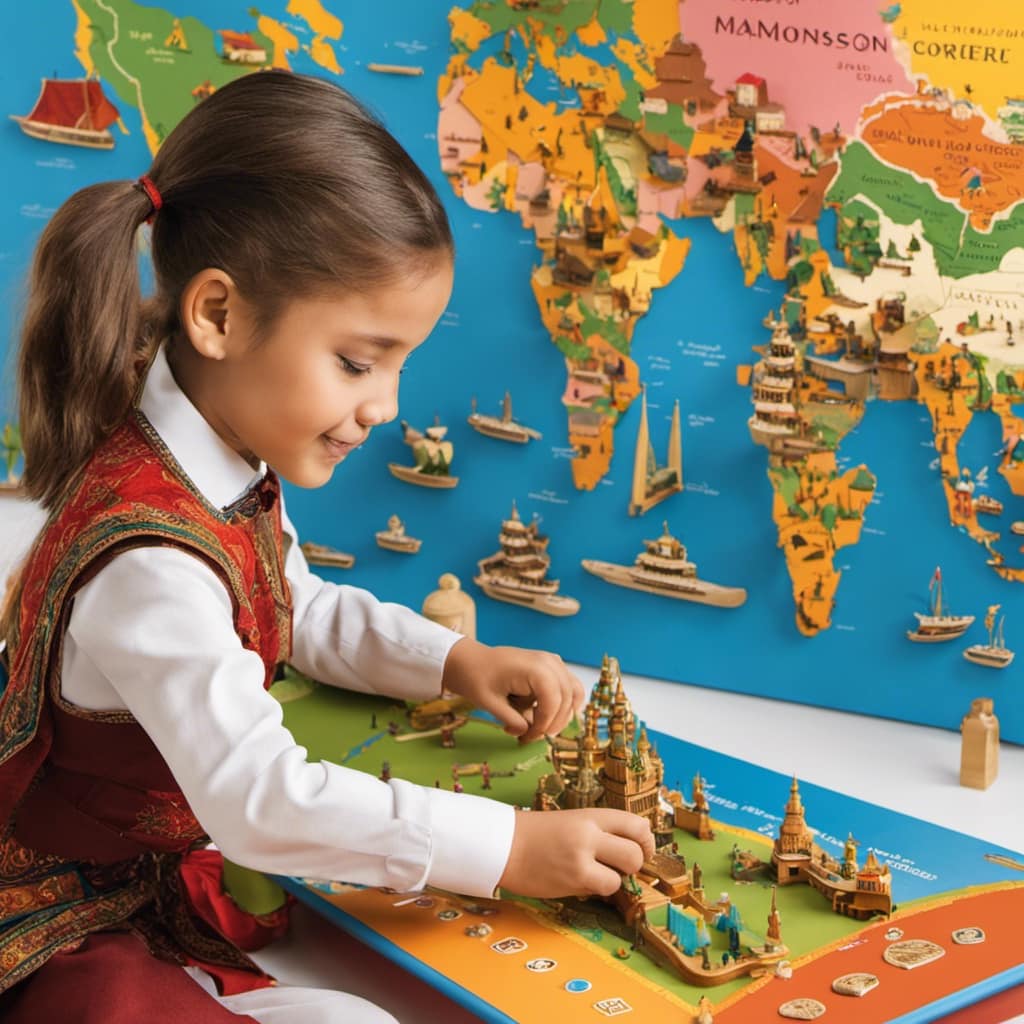
Easy DIY Activity Ideas
As we continue exploring the benefits of practical life activities, it is important to introduce easy DIY activity ideas that can be incorporated into a child’s daily routine. Sensory play and hands-on learning are essential for a child’s development, helping them build crucial skills while having fun. Here are some simple and engaging DIY activity ideas that promote sensory play and hands-on learning:
| Activity | Materials Needed |
|---|---|
| Sensory bin | Plastic bin, rice, toys |
| DIY musical instruments | Empty containers, rice, beans |
| Nature scavenger hunt | Paper, markers, outdoor space |
| Sensory bottle | Plastic bottle, water, glitter |
| DIY sensory board | Wooden board, various textures |
These activities encourage children to explore different textures, sounds, and materials, stimulating their senses and promoting their cognitive and physical development. Incorporating these DIY activities into a child’s daily routine can be a wonderful way to enhance their learning and enjoyment.
Engaging Children at Home
To engage children at home and introduce practical life activities, we can start by incorporating simple and enjoyable DIY projects into their daily routine. Here are three engaging activities that also serve an educational purpose:
-
Cooking Together: Involve your child in meal preparation, teaching them important skills like measuring ingredients and following recipes. This activity promotes independence and boosts their confidence in the kitchen.

-
Gardening: Planting and tending to a garden not only teaches children about nature and the environment but also instills a sense of responsibility. They’ll learn about the life cycle of plants and the importance of nurturing them.
-
Cleaning and Organizing: Teach your child basic cleaning and organizing skills by involving them in household tasks. This not only helps them develop practical life skills but also teaches them the value of taking care of their environment.
Use Natural and Sustainable Materials
When it comes to crafting DIY educational toys at home, using natural and sustainable materials isn’t only an eco-friendly choice but also offers a range of benefits.
Natural materials like wood, fabric, and bamboo are durable, non-toxic, and provide sensory stimulation for children.
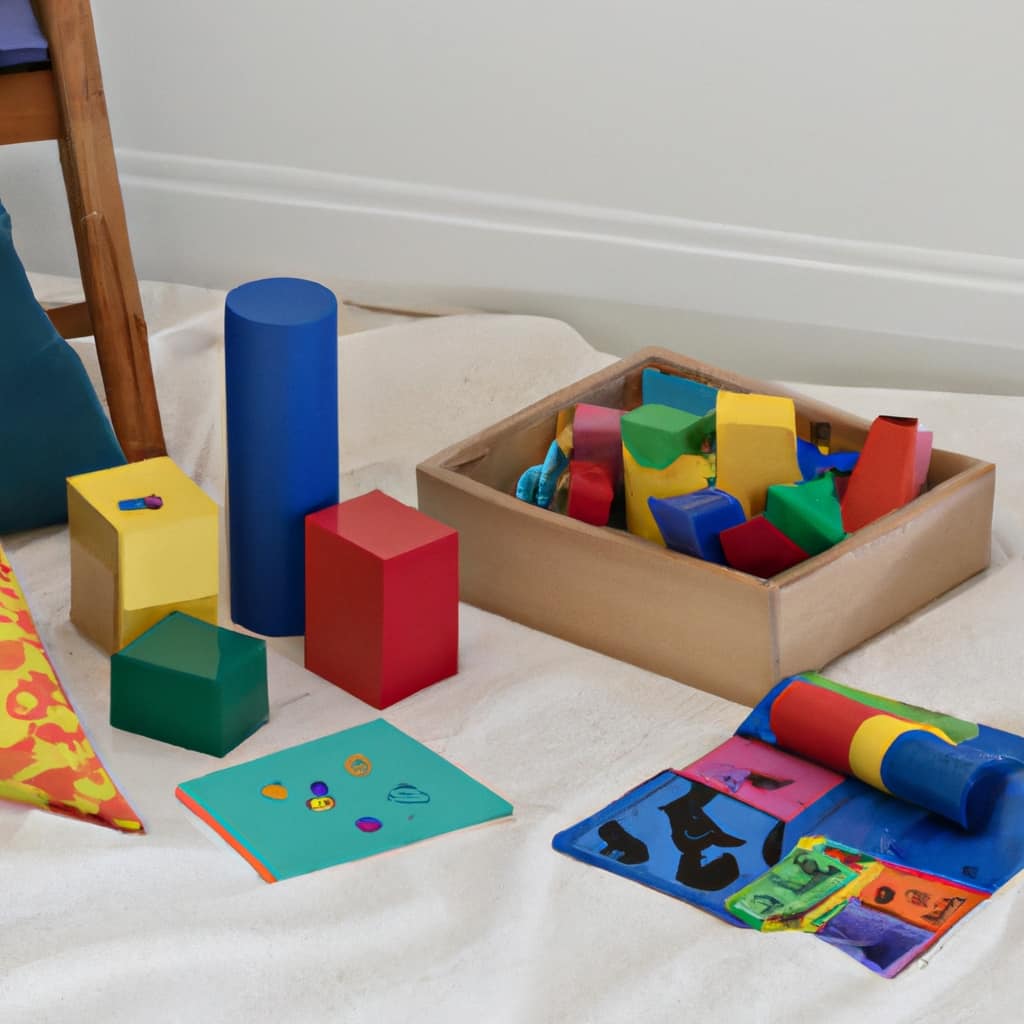
Additionally, opting for sustainable materials helps reduce our carbon footprint and teaches kids the importance of caring for the environment.
Eco-Friendly Toy Alternatives
We can create eco-friendly toy alternatives by using natural and sustainable materials. By incorporating these materials into our DIY projects, we can contribute to a more sustainable future for our children.
Here are three ideas for eco-friendly toy alternatives:
-
Wooden toys: Opt for toys made from sustainably sourced wood. Wood is a renewable resource and can be easily recycled or repurposed.
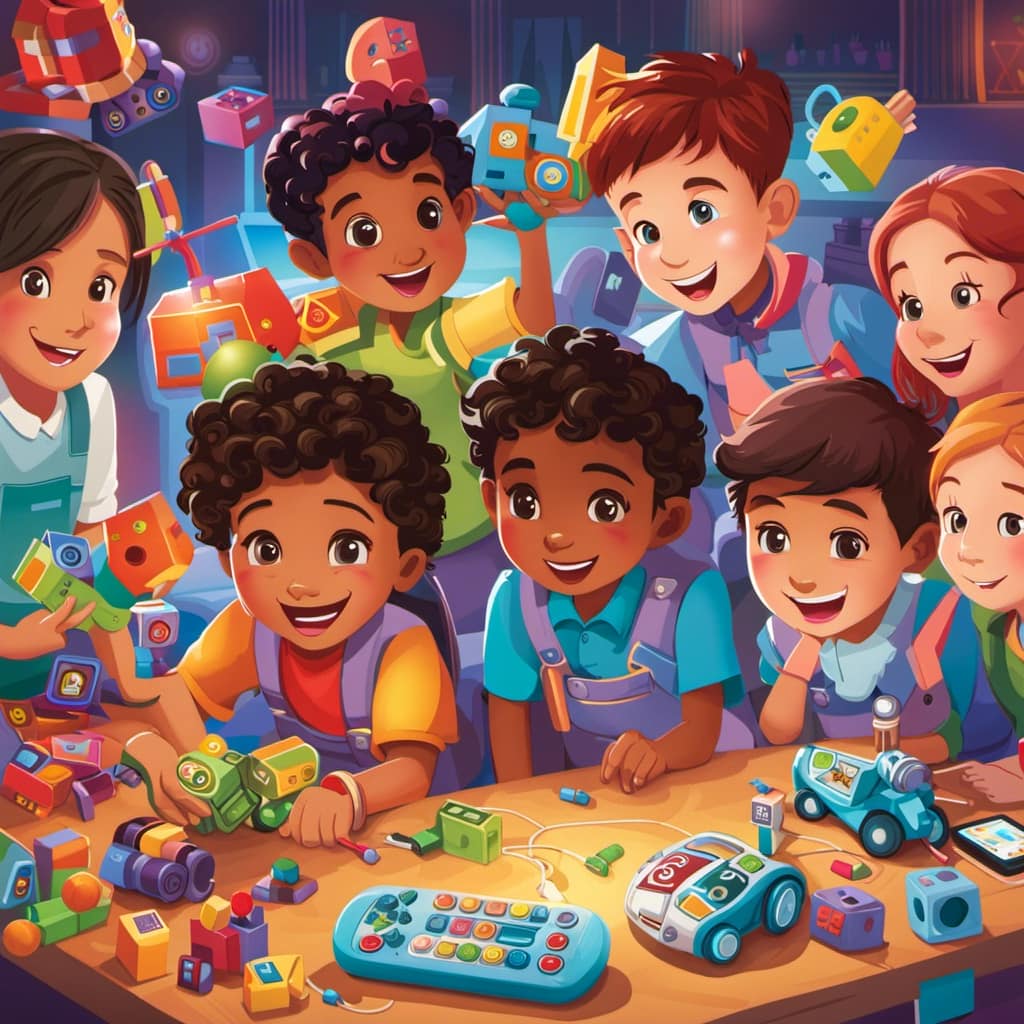
-
Organic fabrics: Choose toys made from organic cotton or hemp fabrics. These materials are grown without harmful pesticides and are biodegradable.
-
Recycled materials: Get creative and repurpose everyday items like cardboard boxes, bottle caps, or fabric scraps to make unique toys. This not only reduces waste but also encourages creativity and resourcefulness.
Benefits of Natural Materials
Using natural and sustainable materials in DIY educational toys offers numerous benefits for both children and the environment. When children play with toys made from organic materials, they are exposed to the natural world, fostering a sense of wonder and appreciation for the environment. This connection with nature has a positive impact on their overall development, promoting creativity, problem-solving skills, and sensory exploration. Additionally, natural materials are non-toxic and safe for children to play with, reducing the risk of exposure to harmful chemicals. From an environmental perspective, using sustainable materials helps to reduce waste and carbon footprint, contributing to a healthier planet for future generations. By incorporating natural materials into DIY educational toys, we can create a more sustainable and enriching play experience for children while also caring for the environment.
| Benefits of Using Organic Materials | Impact of Natural Materials on Child Development | Benefits for the Environment |
|---|---|---|
| Non-toxic and safe for children | Fosters creativity and problem-solving skills | Reduces waste and carbon footprint |
| Connects children with nature | Encourages sensory exploration | Contributes to a healthier planet |
| Promotes appreciation for the environment |
Engage in Collaborative Toy Making
By involving our family members and friends, we can create a collaborative experience while making educational toys at home. Building together not only strengthens our bonds but also enhances the learning process for everyone involved. Here are three reasons why engaging in collaborative toy making is beneficial:

-
Shared creativity: Collaborative projects allow us to combine our different ideas and perspectives, resulting in unique and innovative toy designs. Working together sparks creativity and encourages us to think outside the box.
-
Teamwork and communication: Collaborating on toy making requires effective communication and teamwork. We learn to listen to each other’s ideas, delegate tasks, and problem-solve together. These skills are essential in all aspects of life.
-
Sense of accomplishment: When we build toys as a team, we share in the sense of achievement once the project is completed. This shared accomplishment boosts our confidence and motivates us to take on more challenging projects.
Engaging in collaborative toy making not only creates fun and educational toys but also fosters stronger relationships and valuable life skills. So gather your loved ones and start building together!
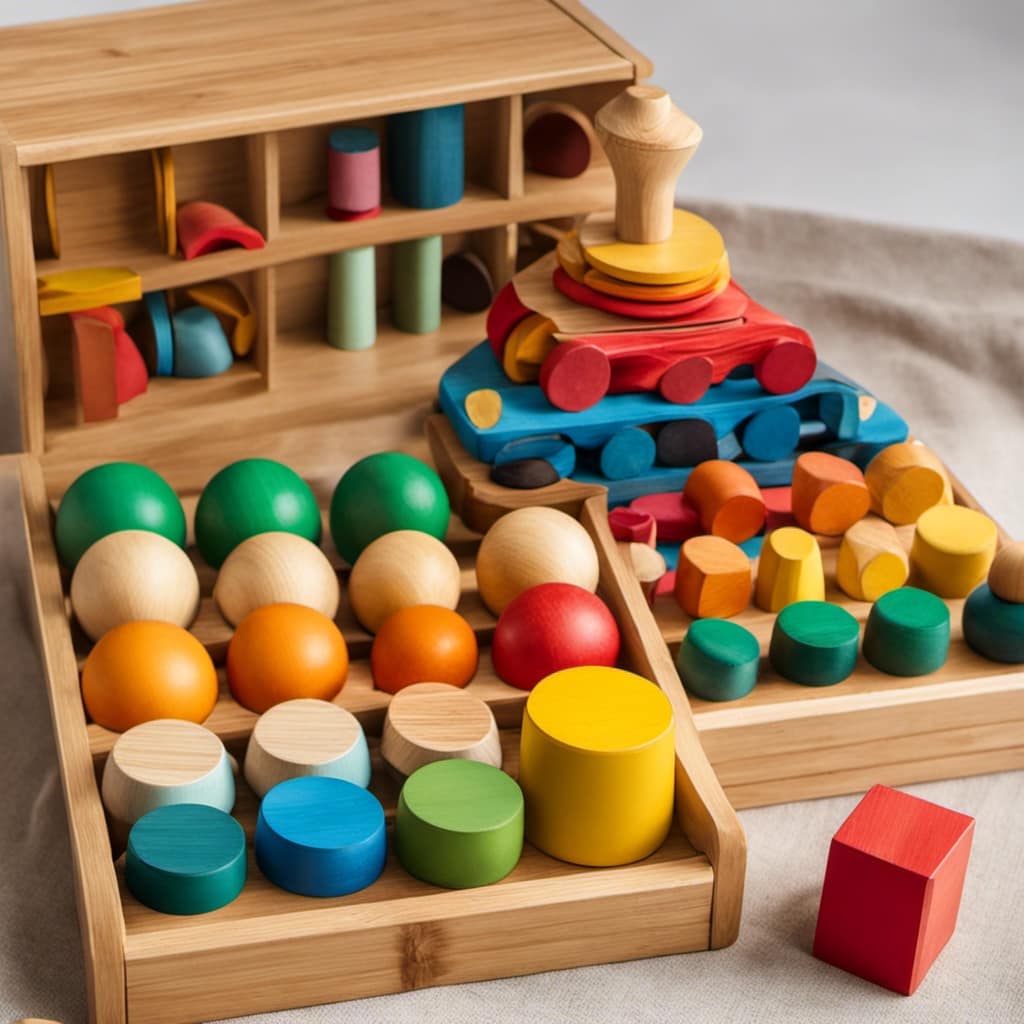
Foster Creativity and Problem-Solving Skills
Building toys collaboratively with our loved ones not only fosters stronger relationships and valuable life skills but also nurtures creativity and problem-solving abilities.
By engaging in DIY toy making, we can foster curiosity and develop critical thinking in ourselves and our loved ones. When we create toys from scratch, we’re forced to think outside the box and find innovative solutions to design and construction challenges. This process encourages us to experiment, take risks, and explore different possibilities. It also teaches us to analyze problems, break them down into smaller parts, and find logical solutions.
As we work together to design and build our educational toys, we’re constantly exercising our problem-solving muscles and honing our ability to think critically. This not only enhances our creativity but also equips us with essential skills that can be applied in various aspects of life.
Personalize Toys for Individual Learning
As we personalize our DIY educational toys at home, we can tailor them to cater to individual learning needs. Individualized learning is crucial in providing personalized instruction that meets the unique needs and interests of each learner. Here are three ways to personalize toys for individual learning:

-
Customizable Components: Incorporate interchangeable parts or pieces that allow children to modify the toy based on their preferences and abilities. This promotes creativity, problem-solving, and a sense of ownership.
-
Adjustable Difficulty Levels: Design toys that can be adjusted to different levels of complexity. This ensures that learners of varying skill levels can engage with the toy at their own pace, promoting a sense of accomplishment and avoiding frustration.
-
Incorporate Learning Preferences: Consider different learning styles, such as visual, auditory, or kinesthetic, when designing educational toys. Provide options that cater to these preferences, allowing children to engage with the toy in a way that suits their individual learning style.
Frequently Asked Questions
How Can I Ensure That the Materials I Choose for DIY Educational Toys Are Safe for My Child’s Age?
To ensure the materials we choose for DIY educational toys are safe for our child’s age, we must prioritize choosing age-appropriate materials. This is crucial for their safety and developmental needs.
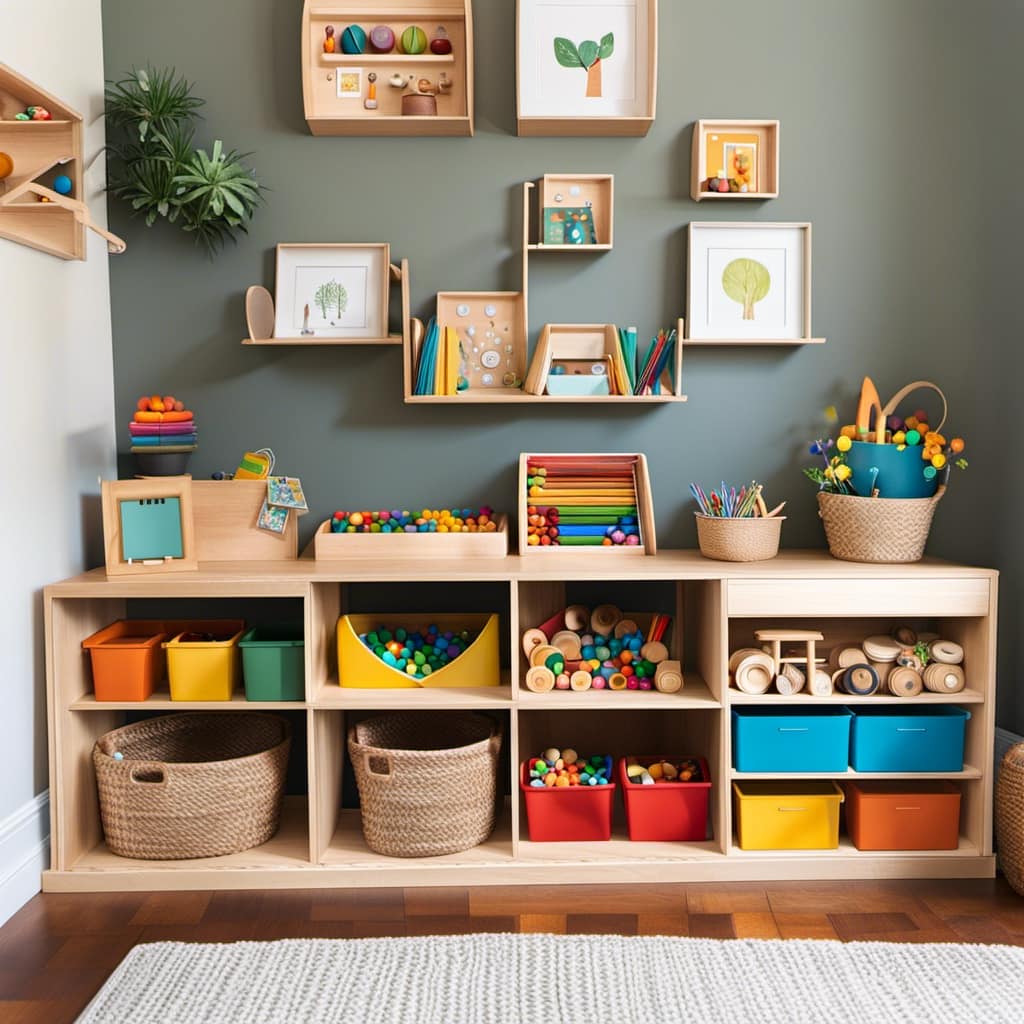
Are There Any Specific Sensory Elements That Are Particularly Beneficial for a Child’s Development?
Sensory play benefits a child’s development by providing tactile stimulation, enhancing their cognitive and motor skills. We believe it’s important to engage their senses through various textures, sounds, and visuals for holistic growth.
How Can I Encourage Open-Ended Play With DIY Educational Toys?
We encourage independent exploration by providing DIY educational toys that promote creativity and problem solving. Open-ended play allows children to freely express themselves, fostering their imagination and critical thinking skills.
Should I Prioritize My Child’s Current Interests When Selecting Materials for DIY Educational Toys?
Yes, we should prioritize our child’s current interests when selecting materials for DIY educational toys. It not only makes learning fun but also fosters a love for play-based learning, which is crucial for their overall development.
Can You Provide Some Examples of Practical Life Activities That Can Be Incorporated Into DIY Educational Toys?
Examples of practical life activities in DIY educational toys include sorting and categorizing objects, and pouring and transferring liquids. These activities promote fine motor skills, problem-solving, and cognitive development in children.
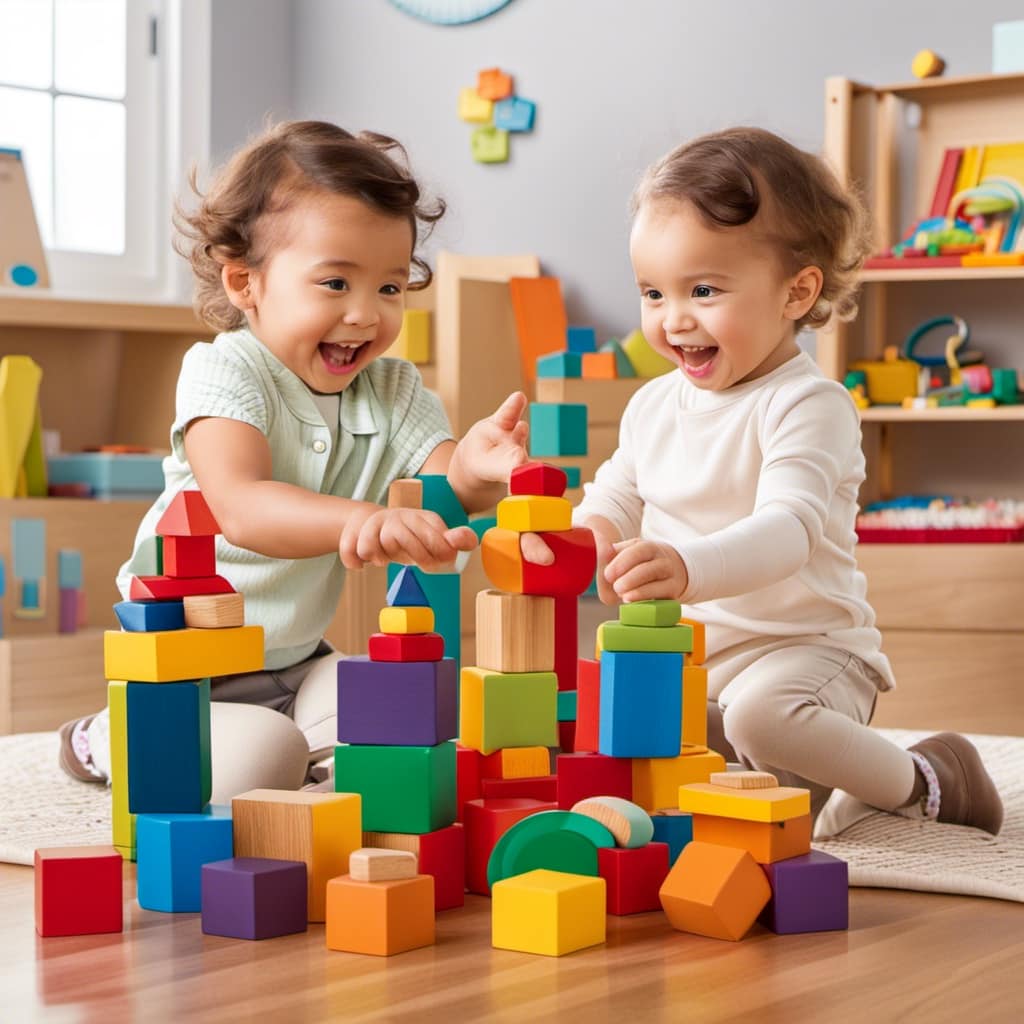
Conclusion
In conclusion, by following these tips, we can unlock a world of educational possibilities right in our own homes. Just as a seed grows into a blossoming flower, our homemade educational toys have the potential to nourish and cultivate our children’s minds.
So let’s embark on this creative journey together, using our hands and imaginations to create toys that not only entertain but also inspire learning.
The possibilities are endless, and the joy of crafting educational toys is truly a gift that keeps on giving.



